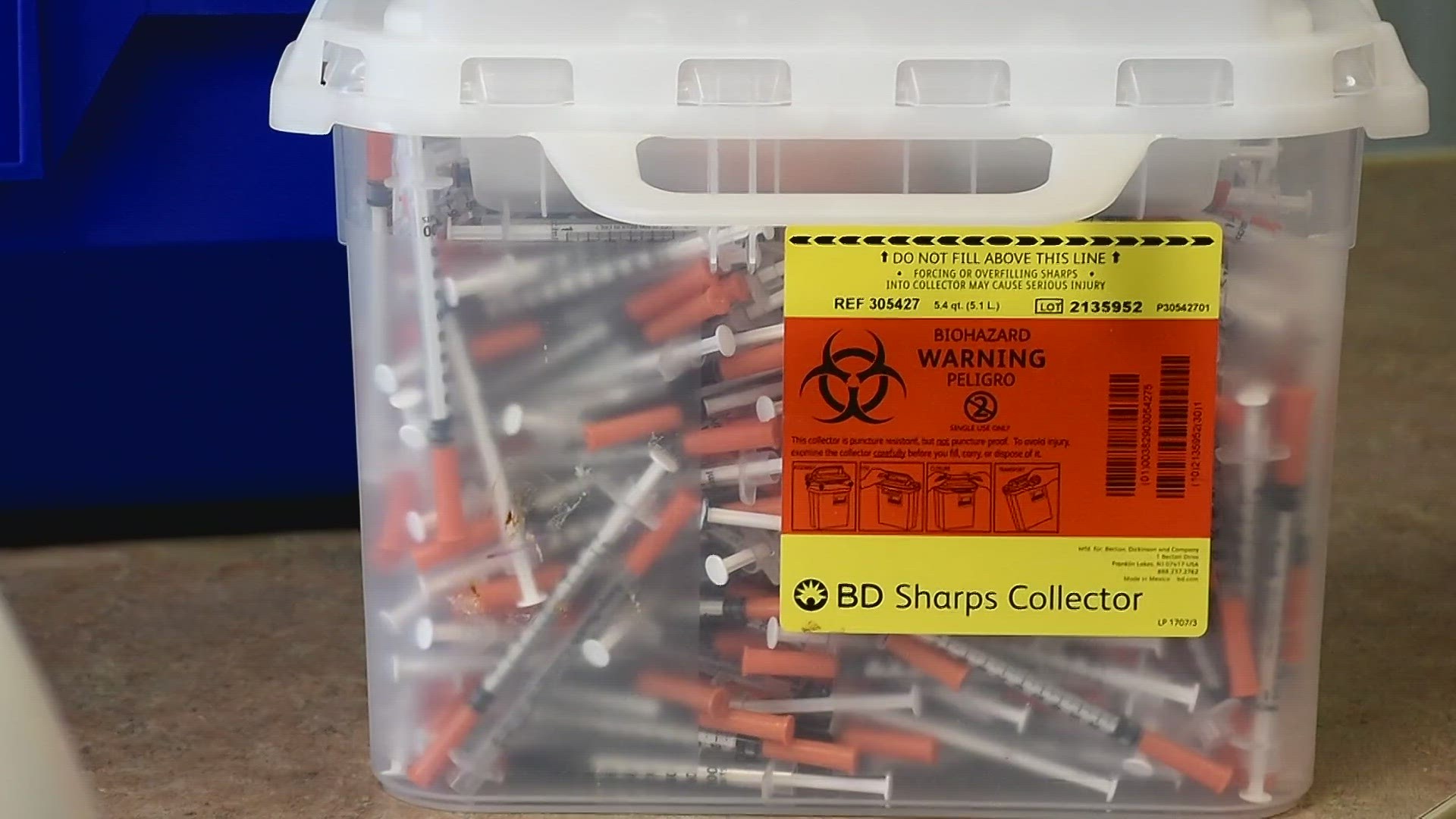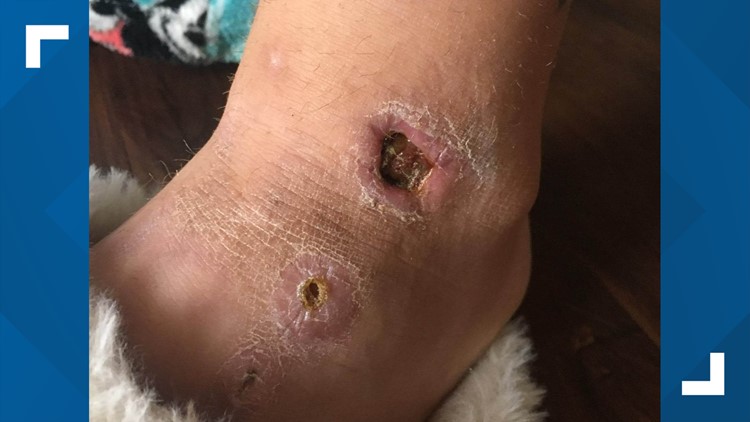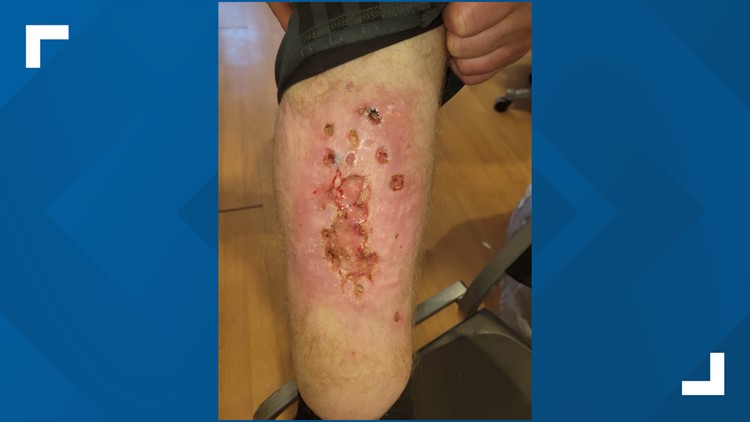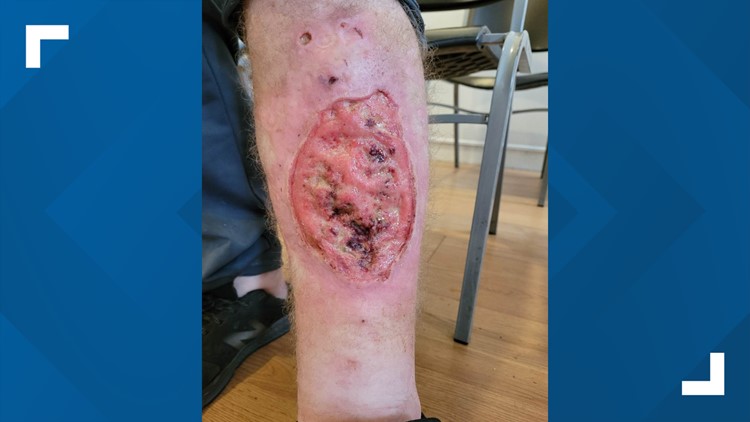MARION COUNTY, Indiana — Lorri McCall thought everything was as it should be back in the Spring 2021. The house was quiet that May 14. She was completing her morning routine thinking her daughter Sheyenne had already left for work.
“Was making my coffee and I'm like, ‘Oh, her car’s still here, better go see if she's awake,” Lorri said.
Walking into the room she noticed the 25-year-old in bed. Sheyenne was “lifeless.”
"She was gone,” Lorri said. “Lying next to her son."
Her grandson was OK, but her daughter died of an overdose. Weeks later she would learn an animal tranquilizer was also in her daughter's system.
"It's almost like someone sold her that drug to kill her...and then I was furious," Lorri said.

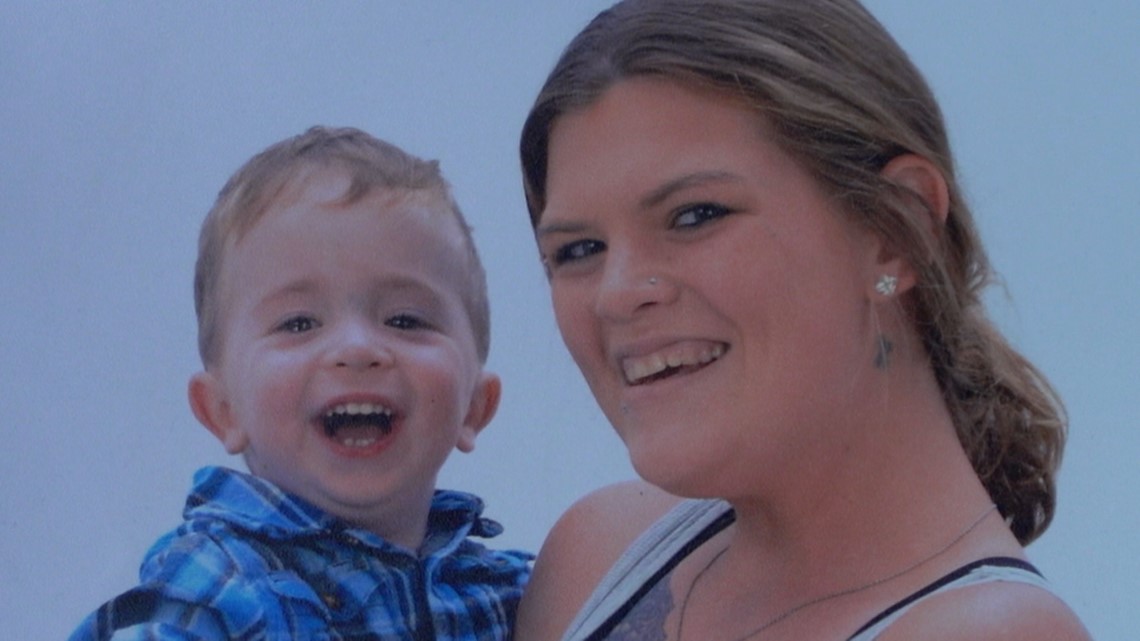
Fast forward nearly two years and 13 Investigates discovered the drug is now more prevalent in central Indiana’s drug supply. It’s also being found in more overdose deaths.
Sheyenne’s toxicology report included several well-known substances including methamphetamine and fentanyl. Xylazine was also found in the young mother’s system.
“I had never heard of xylazine,” Lorri said.
What is Xylazine?
Xylazine is a drug used by veterinarians to sedate dogs, cats, horses and even cattle. The U.S. Food and Drug Administration has approved it for animal use, but not humans.
Still, drug dealers are mixing xylazine with fentanyl, cocaine and other illicit substances. While those drugs are illegal, xylazine is a gray area. Currently, the animal sedative is not a scheduled drug like heroin or fentanyl.
“When I found out that it didn't matter how much Narcan we used, she was never going to come back. I'm like, that's, that's pretty crazy," Lorri said.
Narcan is a brand of naloxone. The medication can quickly reverse an opioid overdose. It doesn’t work on xylazine, because the veterinary sedative and muscle relaxant is not an opioid.


13 Investigates learned while there is a veterinary antidote, it may not be safe for humans. In a letter to medical professionals, the FDA wrote: “Since we do not know if reversal agents regularly used in veterinary medicine (e.g., yohimbine hydrochloride, tolazoline hydrochloride) are safe or effective in humans, they should not be used."
Watching for signs of Xylazine
Kera Healy thinks finding an antidote is crucial. She’s the Director of Nursing for Praxis of Carmel by Landmark Recovery.
She’s struggled with substance abuse herself and now works to help others become clean.
13 Investigates first started asking her about xylazine at the end of December. At that time, she had not seen a suspected xylazine case. Nine weeks later, she sent an email to 13 Investigates saying that changed.
“I think I've seen two people,” she said.
Two different patients and both resistant to naloxone. She recalled the scary moment when she realized the overdose reversal medicine wasn’t working on one patient.
"Gave her loads and loads and loads of Narcan and nothing was really working,” Healy said.
She reports at least 10 doses were given to the patient.
“I literally thought, I'm like, ‘We're going to lose her,’” Healy said. “And I'm going to have to call her mother and tell her that something went wrong this go round. And I don't ever want to make that phone call.”

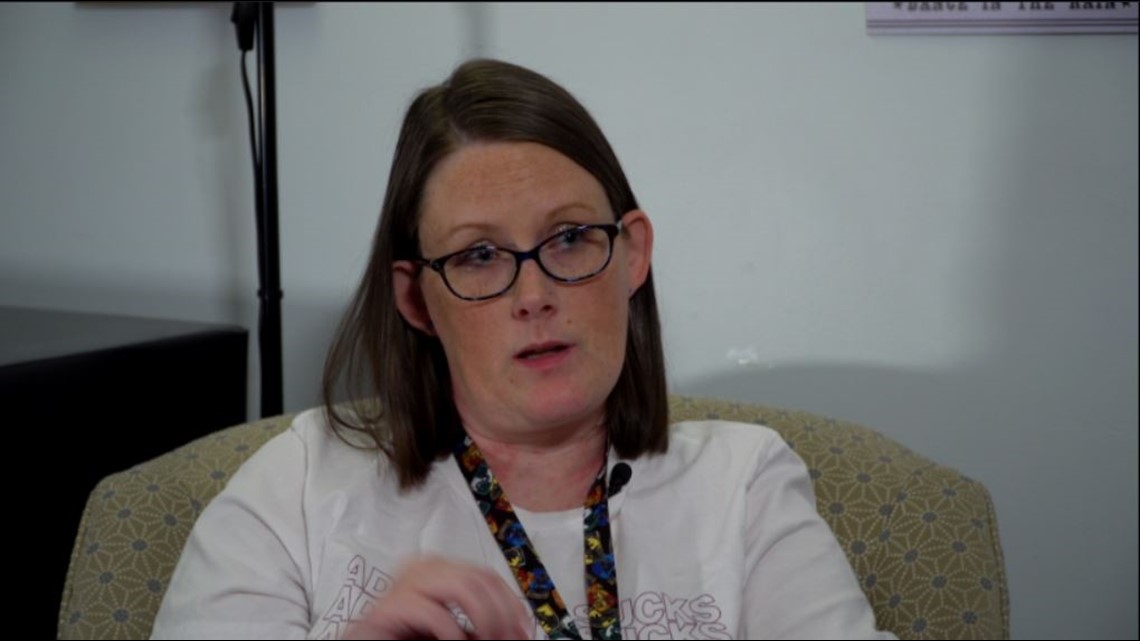
The patient survived thanks to CPR. Healy spoke to the patient after they were discharged from the hospital.
"The things she was telling me kind of just triggered in my head things we had talked about,” she told 13 Investigates' Cierra Putman.
“She said right before she collapsed in the chair she was feeling like her skin was like on fire,” Healy said.
That patient and another also reported their injection sites felt different.
"She pulled her arm out of her sleeve to show me, and it was it was quite gruesome looking,” Healy said. "It looked like something had eaten away at her skin."
WARNING: The images in the following gallery are graphic.
Wounds from drug use of Xylazine
Healy doesn’t know for sure if xylazine was in the women’s system. But she reported seeing sores and abscesses similar to wounds found in chronic xylazine users in Philadelphia – the epicenter of our nation’s “Tranq” problem.
The addiction recovery center doesn’t test for xylazine now.
“It wouldn't surprise me if that's coming soon,” Healy said.
13 Investigates learned some health care facilities can test for xylazine, including IU Health.
After two possible encounters, Healy plans to train her staff what to look for so they can communicate with paramedics and hospitals should they suspect the animal tranquilizer is in play.
Xylazine in more than half of Marion County drug supply
Drug dealers are selling xylazine as a way to extend the highs associated with fentanyl, cocaine, heroin and other drugs. While it has been around for years, it just recently became more prevalent in central Indiana.
Madison Weintraut, with the Marion County Public Health Department, said xylazine is showing up in syringes it tests.
The county’s Safe Syringe Access and Support Program hands out about 10,000 syringes a week.

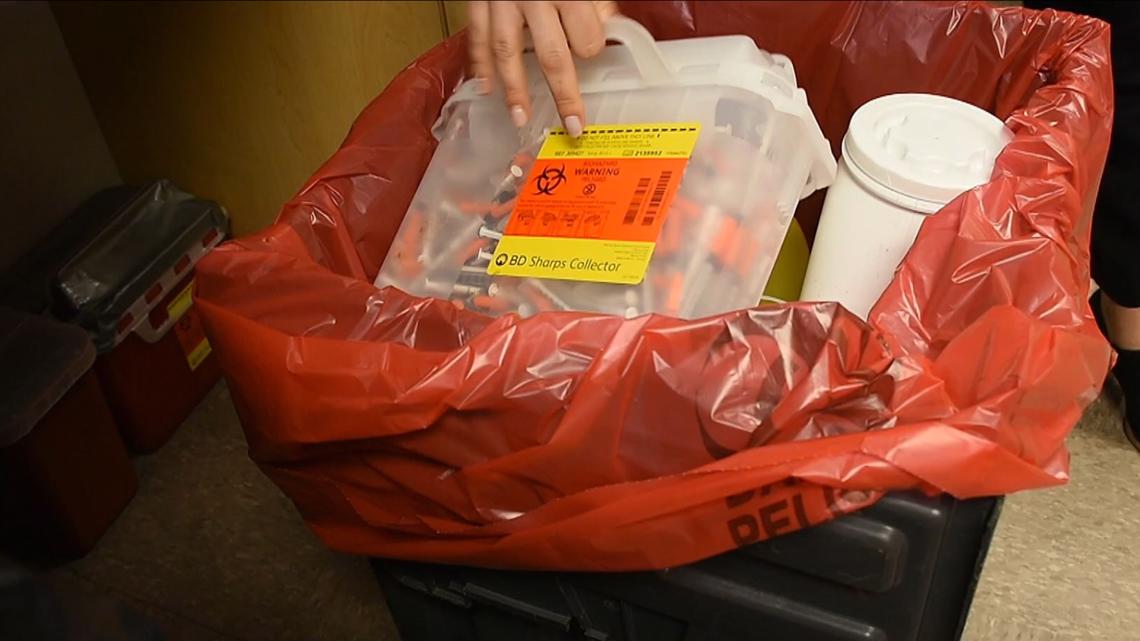
The program was put in place to help reduce infections and other diseases addicts receive when using dirty syringes. The county started testing what was inside to track illicit drug trends.
Weintraut says she first started hearing about xylazine in the spring or summer of 2022, months before the FDA sent out a warning letter to health care workers.
Back then, about 6 percent of the syringes the county tested were positive for the animal tranquilizer.
“Steadily, month by month, that's increased. We were at 55% for the month of January,” Weintraut said. “It means that about half of the drugs that we are collecting are laced with xylazine."
Again, prolonged use can leave lasting scars. Reports out of Philadelphia, the epicenter of the U.S. xylazine problem, shows users with gruesome ulcers and abscesses. It’s so bad there the city started rolling out wound treatment vans.
Weintraut said the health department is already treating patients with sores.
"We're not to Philly yet,” Weintraut said. “But I think, you know, if it continues at the rate – we can get to Philly in the next year.”
Growing number of deaths with Xylazine
While the focus now is on helping the living, many parts of the country first start noticing xylazine’s presence via the dead.
In 2021, overdose deaths were still a serious problem, but cases with xylazine were relatively rare in central Indiana.
Still, limited data from the Drug Enforcement Administration showed Sheyenne was one of 351 people who overdosed with xylazine in their system back in 2021. The year before, the DEA only knew of 57 overdose cases – meaning cases increased by more than 516%.
A DEA report, describing xylazine as a “growing threat,” states:
“These numbers may not represent every xylazine-positive overdose death, but at least account for a minimum of instances. It is unknown what percentage of the increase is due to expanded testing versus increasing use of xylazine.”
The labs Indiana coroners use for toxicology reports do test for xylazine. However, the exact number of overdoses involving xylazine is still unclear.
13 Investigates reached out to multiple central Indiana coroners. Some said they didn’t have any cases involving xylazine. Boone, Bartholomew, Shelby and Elkhart counties told 13 Investigates they’ve seen a few cases over the last five years.
Johnson County, where Sheyenne died, reported seven cases in 2021 and 2022 - just a fraction of the 30 death investigations involving xylazine reported by the Marion County Coroner’s Office in 2021.
However, 13 Investigates does not know of any cases where xylazine is the sole cause of death. Right now, it’s being used as an adulterant like how fentanyl was first introduced.
Which is why fentanyl is still the main focus when combating our drug issue, according to Michael Gannon, the assistant special agent in charge for the DEA in Indianapolis.
“We really have to educate people,” Gannon said. “If they're using drugs, you don't know what's in it. You have no idea what these drug dealers are putting into it.”
The hope is word will get out and may deter others from using.

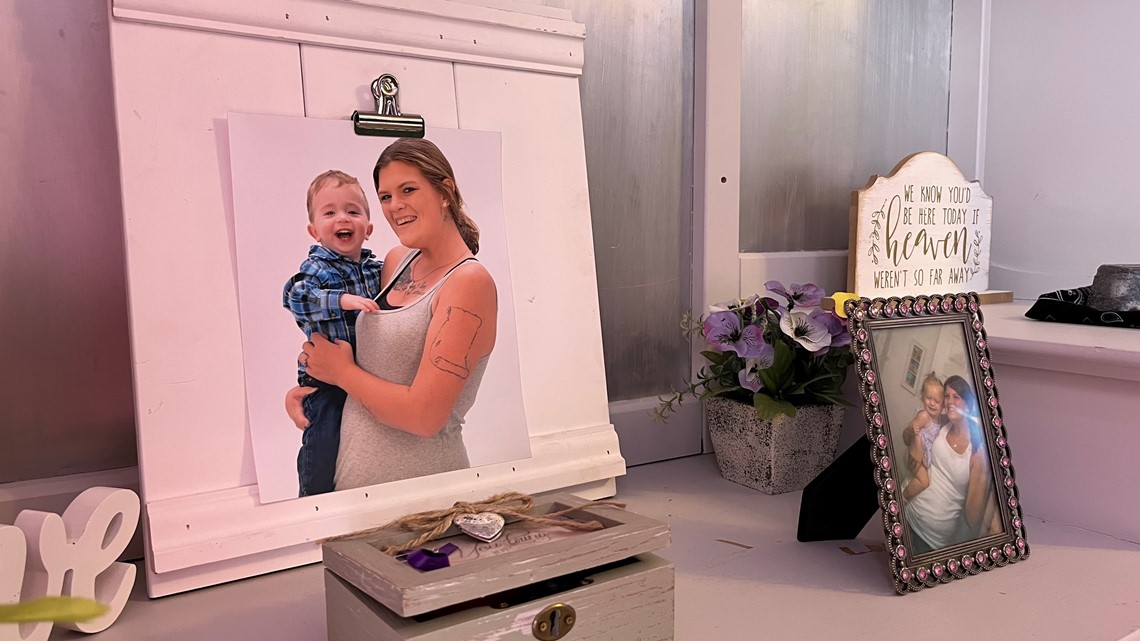
Lorri said Sheyenne was clean for 10 months and relapsed shortly after a breakup.
"I would do anything to keep her off of those drugs, but I had no clue she was going to go back," Lorri said.
She now tells Sheyenne’s story in hopes it can help someone else struggling with addiction or even prevent someone from experimenting with drugs.

